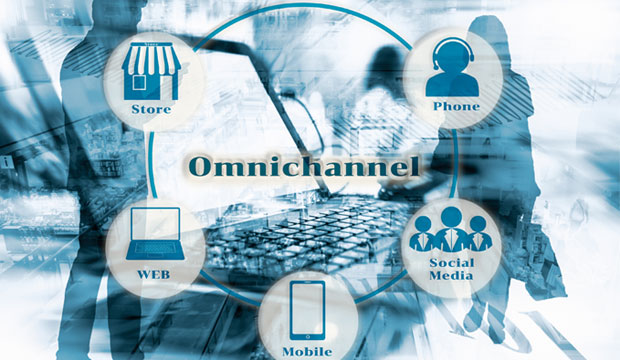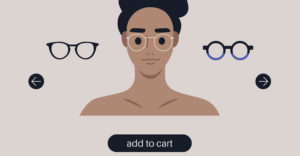Contemporary e-commerce means selling through a variety of channels beyond traditional company-owned websites — including a plethora of social media, mobile and other platforms. Multichannel selling quickly has become the norm, and consumers increasingly expect to be able to shop wherever they happen to be in the digital world.
“Today, retailers have countless options of channels to choose from,” said Marcel Hollerbach, CMO of Productsup.
“There are hosted online stores, big marketplaces like Amazon or Walmart where third-party sellers list their items, and social media platforms like Instagram or Pinterest that have recently added shopping features. If you’re listing your products on any of these channels at the same time, you’re partaking in multichannel e-commerce,” he told the E-Commerce Times.
The ultimate goal of multichannel e-commerce is to sell more products. Simply put, the more places where consumers can find a company’s products, the more products that company can sell.
“There are many benefits to selling on multiple channels, but the main goal for companies is to increase sales,” said Nick Maglosky, CEO of Ecomdash.
“Being able to have your products in a place where your target audience shops increases the chances of someone buying your products,” he told the E-Commerce Times. “Each individual consumer has his or her own appreciation for shopping on any given channel. Some shoppers only like to buy from Amazon because of the Prime shipping benefits, while other shoppers like purchasing directly from a retailer because it has that ‘support the local/small business’ feeling. The main goal for the company is to meet its target audience’s shopping desires by selling on the platforms they prefer.”
Multichannel Benefits
Multichannel e-commerce offers many benefits for consumers. They’re much more likely to find products they want and need if those products can be obtained in the places they’re already hanging out.
“The influx of online channels that have emerged over the last decade creates tremendous shopping opportunities,” observed Hollerbach. “Making an online purchase can be risky without the ability to see it in person and try it on for size, so being able to look at a product on multiple sites and read various reviews helps you to make smart purchasing decisions.”
Consumers also respond well to multichannel e-commerce because it’s easier on the wallet.
“Take Amazon Prime Day, for example,” said Hollerbach. “Multiple channels, like Amazon and Target, had different deals over the two-day event. Consumers could search for the products they wanted across various sites to find the lowest listing.”
Multichannel selling offers e-commerce companies a host of benefits, as well — from increased sales to a broader reach.
“Retailers want to be where consumers are, and today consumers shop across several channels before they make a purchase,” noted Hollerbach. “To follow consumers in their shopping journey, retailers need to be at as many of those touchpoints as possible. The more visibility consumers have to your products while they’re bouncing from channel to channel, the more likely they are to buy your product. Not only does having a strong multichannel e-commerce strategy drive more sales from recurring customers, but it also expands your reach to new customers.”
Multichannel Strategies
Deciding on the proper channels is a major part of being a successful multichannel retailer — and the process of deciding where to be must be ongoing, since new channels open up every day.
“The first thing retailers looking to expand to more channels need to do is identify the channels that will be most profitable for them,” said Hollerbach. “The number of options to choose from can be overwhelming, so starting with a clear understanding of your target customers, niche, and inventory logistics will help determine the best possible channels to sell on.”
Knowing the specific characteristics of each channel also helps businesses formulate a plan for exactly how to market their products in those spaces.
“The channels you choose will also determine your listing strategy. Customers go to certain channels to find specific items or information, so setting up your listings to reflect the channel’s aesthetic and purpose is important to attracting shoppers,” explained Hollerbach. “For example, you’ll want to include the craft behind the manufacturer for a listing on Etsy, whereas on Instagram Shopping, images of the product in use are more important than the product description.”
To be a successful multichannel retailer, it’s vital to have a clear plan in place not just for sales, but also for inventory management and shipping.
“The most common mistake we’ve seen is when e-commerce businesses try to scale across multiple channels without first having a solid process in place for how their inventory will be organized and placed in their warehouse, how they will they sync their items across the various channels to avoid oversells and out-of-stock situations, and how their pick-and-pack process will work,” said Nizar Noorani CEO of SellerChamp.
“Without these three key elements in place, the entire operation goes haphazard,” he told the E-Commerce Times.
The right pricing strategy also is key to successful multichannel sales.
“The other issue we’ve seen often is not pricing your products to cater to each selling channel,” noted Noorani. “Both of these issues can be easily avoided through the use of technology. A software platform like SellerChamp — which enables you to list your products across multiple channels, enables you to store its location in your warehouse, syncs your quantities across the channels where you sell, and reprices your items continuously across all your channels — is key to avoiding these mistakes and to running a successful multichannel operation.”
Above all, it’s important for brands to tailor their sales strategies for each channel — and for the people who frequent that channel.
“Often brands give the same message and collateral to each channel,” said Paul Savage, vice president at Core dna.
“Tailor how you present your brand per channel. Shoppers at Walmart and Amazon may have different reasons for purchasing your items,” he told the E-Commerce Times. “Highlight that in your product information.”
A Multichannel Future
Multichannel selling is becoming the norm in the world of e-commerce.
“As technology evolves, the distinction between online and offline for consumers will disappear,” said Anthony Payne, vice president of global marketing at Brightpearl.
“Services like Buy Online Pick Up In Store (BOPIS) and endless aisle will become more mainstream as retailers — both big box players and independents — respond to these changes and look to introduce accessible technologies to provide more cross-channel choice and convenience,” he told the E-Commerce Times.
The channels available for selling are undergoing constant changes, and the landscape will continue to be in flux, with borders between content and sales blurring.
“There are a few things that we see as part of the evolution of multichannel,” said Michael Ugino, director of product marketing, multi-channel commerce, atGoDaddy.
“For a while now, we’ve been waiting to see when and how Facebook and Instagram will finally realize their commerce potential,” he told the E-Commerce Times.
“The first glimpse of this may be the advancement of consumer engagement platforms like Google as shopping avenues. While most shoppers are familiar with the experience of seeing an advertisement and clicking through to a shopping site, marketplace or landing page, Google will soon provide an interesting opportunity for the ad to actually be the purchase medium, with the shopper never proceeding beyond to a checkout destination,” Ugino pointed out.
“For the merchant,” he added, “this means changes in how to optimize a channel that’s no longer as tangible and workable as those in which they traditionally operate.”























































